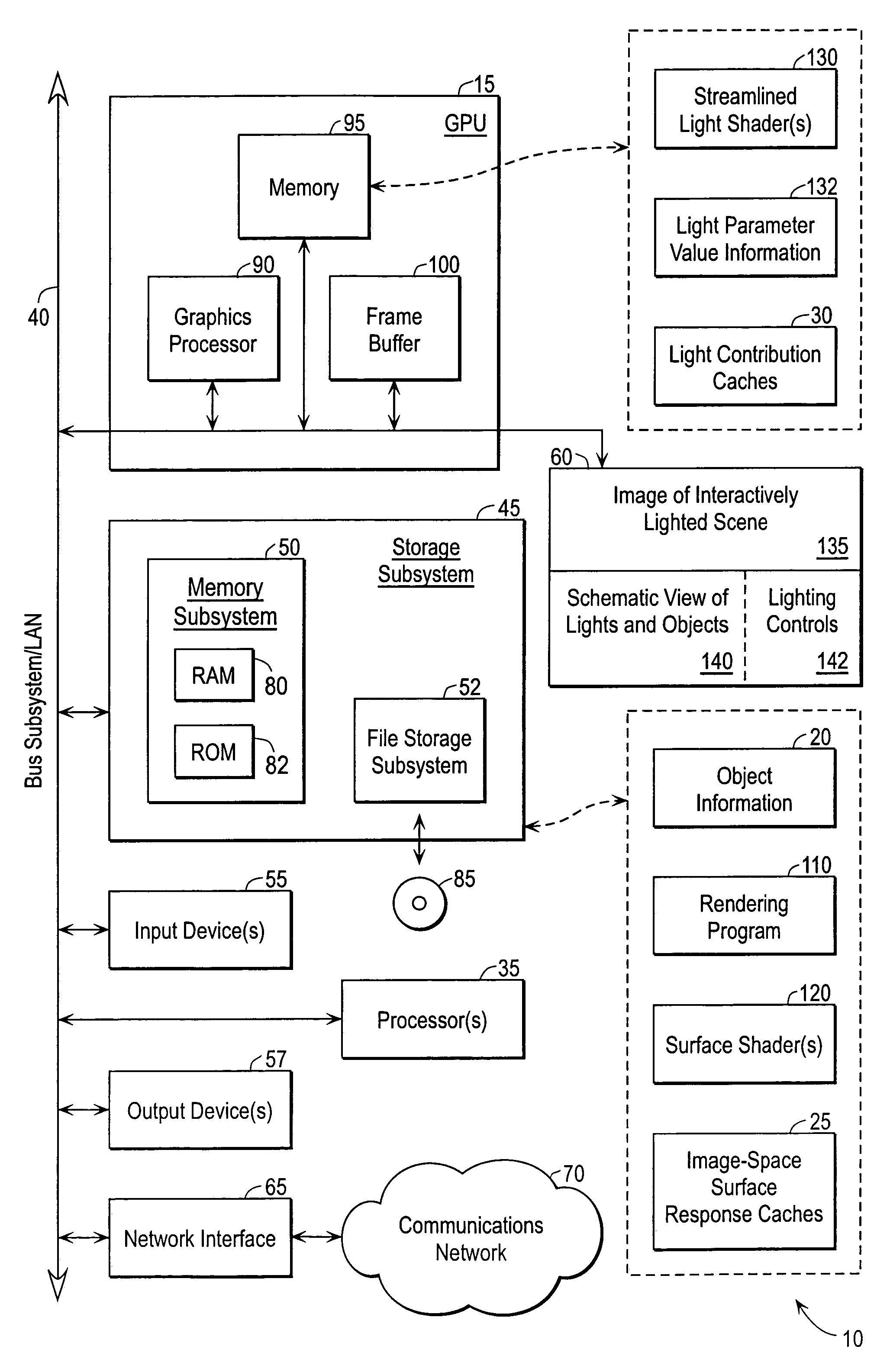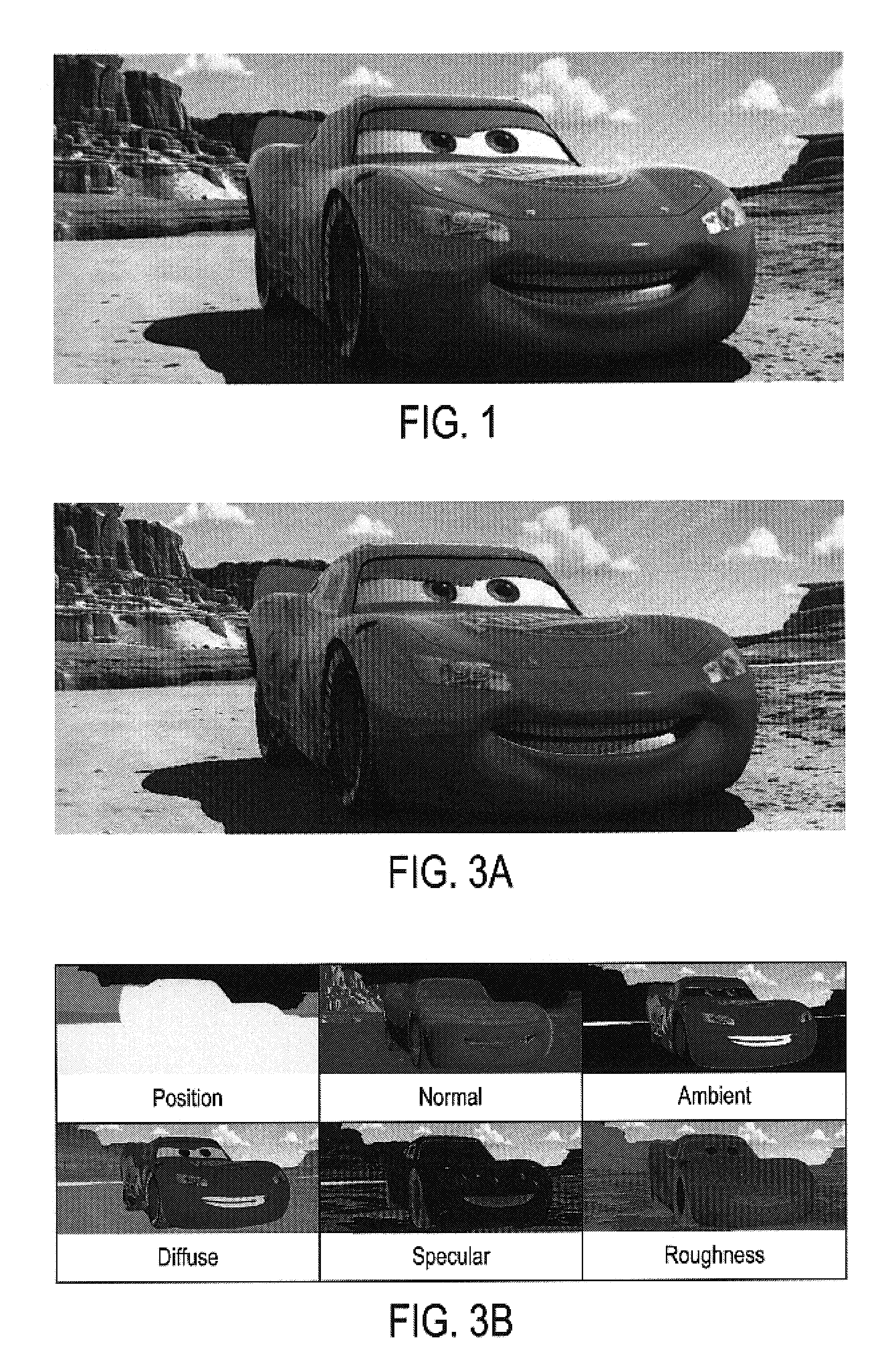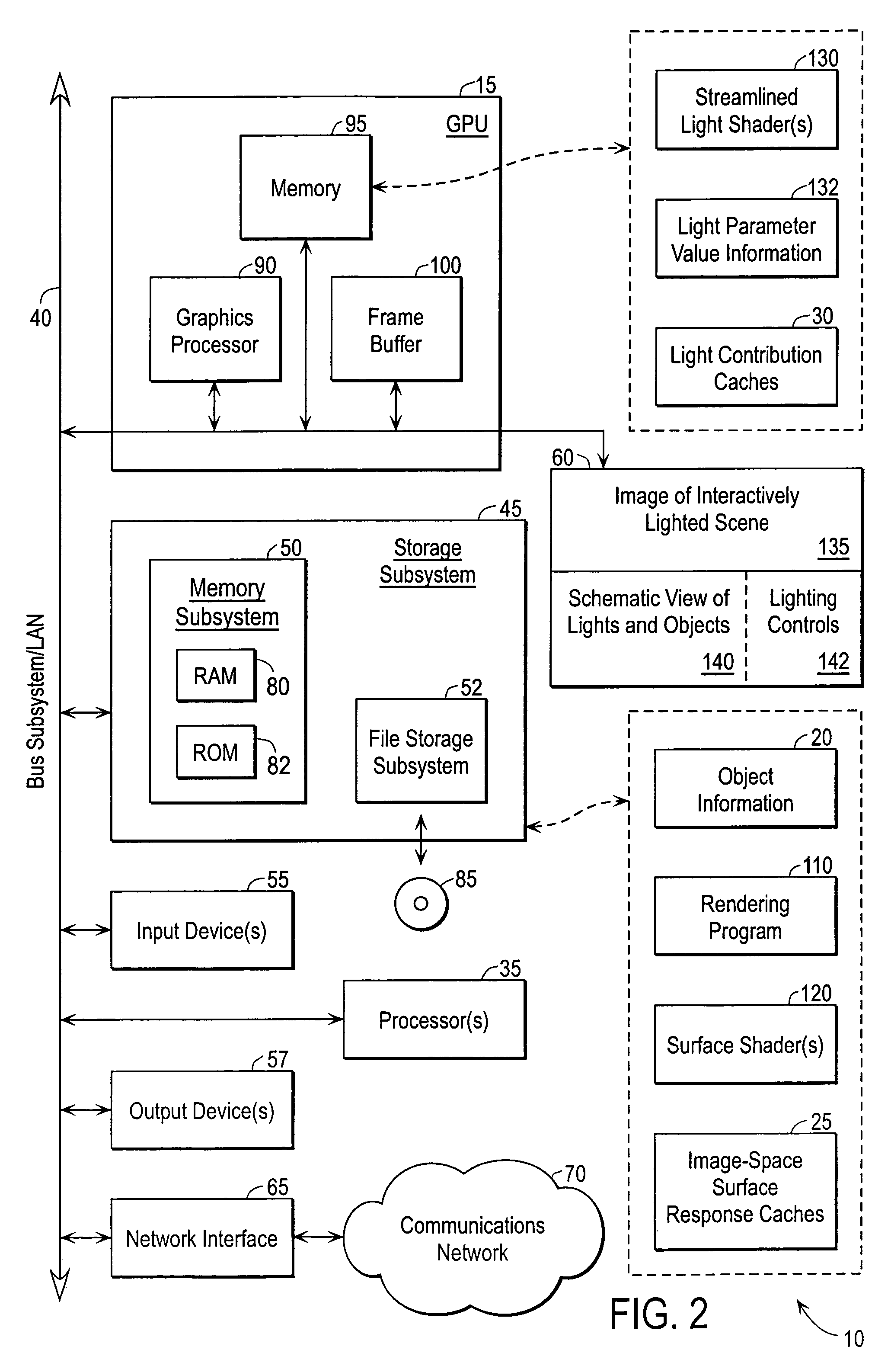Hybrid hardware-accelerated relighting system for computer cinematography
a relighting system and computer technology, applied in the field of image rendering, can solve the problems labor-intensive and time-consuming processes, and geometric complexity, and achieve the effects of increasing geometric complexity, increasing the difficulty of relighting systems, and increasing the difficulty of relighting
- Summary
- Abstract
- Description
- Claims
- Application Information
AI Technical Summary
Benefits of technology
Problems solved by technology
Method used
Image
Examples
Embodiment Construction
Introduction
[0056]Embodiments of the present invention provide lighting designers with an interactive tool of adequate fidelity for most blocking and many refinement tasks. A relighting system according to embodiments of the present invention provides lighting artists with high-quality previews at interactive framerates with only small approximations compared to the final rendered images. In some cases the quality of feedback is high enough to permit final shot lighting without resorting to conventional software rendering. In an exemplary embodiment, a cache-generating shader is executed by a conventional software renderer, followed by a cache-reading shader executed on the GPU. In this embodiment, light shaders are manually translated to a hardware shading language, and the results computed by lights are combined by a fixed general-purpose illumination model.
Shading Overview
[0057]This application sometimes refers to RenderMan® shaders and RenderMan software. RenderMan, which is a r...
PUM
 Login to View More
Login to View More Abstract
Description
Claims
Application Information
 Login to View More
Login to View More - R&D
- Intellectual Property
- Life Sciences
- Materials
- Tech Scout
- Unparalleled Data Quality
- Higher Quality Content
- 60% Fewer Hallucinations
Browse by: Latest US Patents, China's latest patents, Technical Efficacy Thesaurus, Application Domain, Technology Topic, Popular Technical Reports.
© 2025 PatSnap. All rights reserved.Legal|Privacy policy|Modern Slavery Act Transparency Statement|Sitemap|About US| Contact US: help@patsnap.com



